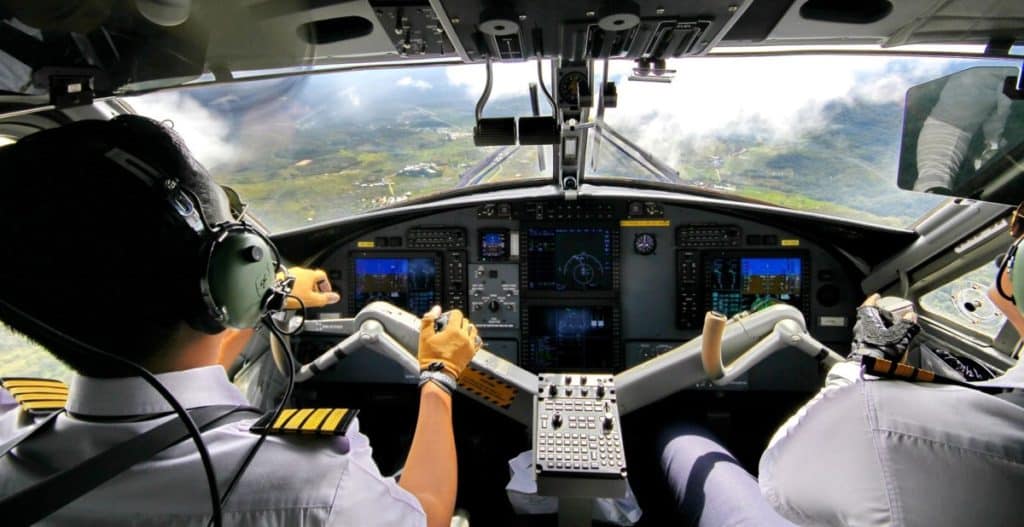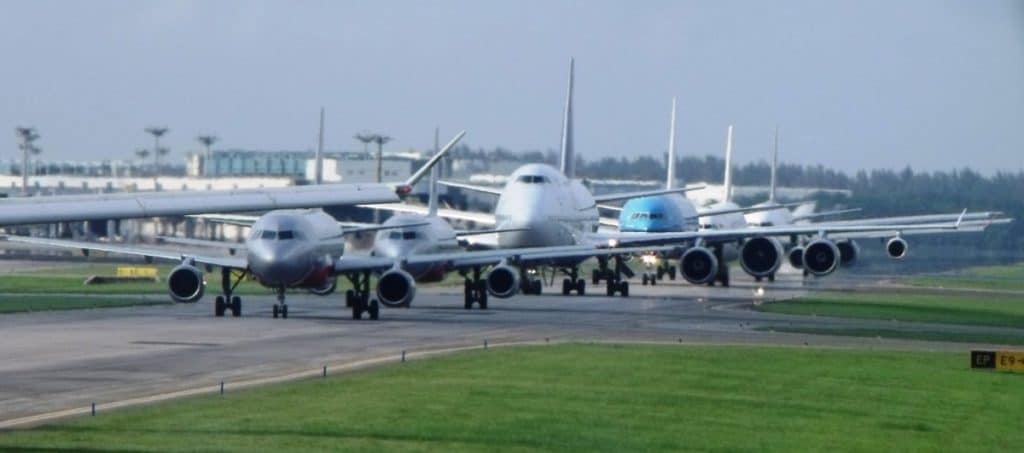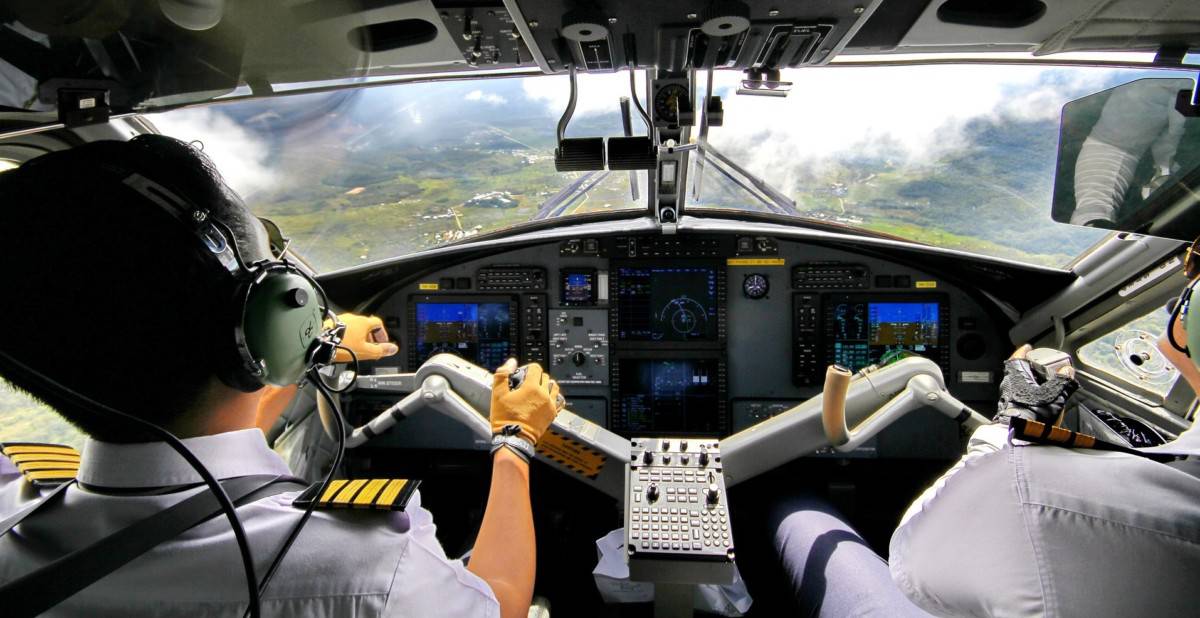
For most people wishing to become a pilot, speaking English may be something they do already, especially considering English is taught throughout the world over. But what about those who have never spoken a word of English in their life, can they still become a pilot?
All pilots who fly internationally are required to speak English as required by ICAO (International Civil Aviation Organization) standards. Using English as the global aviation language helps provide clear communication between pilots and air traffic controllers to prevent accidents and incidents.
So it makes sense that a single language is used when flying internationally but what if you just want to fly around your local area in a country where English is not the native language?
Local Aviation Language
If you live and fly in a country where English is the predominant language, for instance, countries like the USA, Canada, UK, and Australia, then all of the radio communications between pilots and air traffic control will be in English and you will have to learn to speak it to the applicable standard.
That applicable standard is English Proficiency Level 4. For more information on this standard see the resources section at the end of this article.
However, if you live, learn, and fly in a country where English is not the predominantly spoken language and you do not fly outside of that country then you do not have to learn English.
At the time of writing this, I am flying on a contract in Quebec, Canada and all of the local pilots and air traffic controllers are speaking in French, which makes it really difficult for me to build my situational awareness around me.
The main difference though is that Air Traffic Controllers MUST be able to speak English as well as their local language no matter where they are located. When a pilot initiates a call in English, the controller immediately switches to giving the advisory information in English, although with a possible accent!
Why is there an Official Aviation Language?
Back in 1951, ICAO recommended to the world’s aviation-using countries to begin using a standardized set of aviation practices, policies, and procedures to ensure all aircraft, companies and their employees were all working from the same page.
There were many particulars that were to be standardized and the language to be used worldwide in aviation was English. This was due in part to the US and UK manufacturing most of the world’s aircraft at that time.
As part of English becoming the international standard of aviation communication there have been numerous additions of phraseology over the years to ensure miscommunication does not happen.
The phonetic alphabet is a great example of this. Each letter of the alphabet is depicted by a word that sounds like no other word in the alphabet to ensure they do not get confused during communication.
For Example:
A = Alpha
B = Beta
C = Charlie
and so on…
One of the other standardizations is the order in which communication is delivered. By keeping the same order of information pilots and controllers are able to expect certain pieces of information at certain parts of the transmission, even if the accents of both people are strong.
The ATIS is a perfect example of this. The ATIS or Automatic Terminal Information Service gives pilots information about the airport they are flying into or out of. It gives information like wind, pressure, cloud heights, visibility, runway in use, restrictions, etc, and the information is always delivered in the same order.
For more information on ATIS you can read more here at Wikipedia.

Join My Newsletter & Get Great Tips, Information and Experiences To Help You Become a Superb Pilot!
When the correct phraseology is used it allows known words to be given and received to further aid in preventing miscommunication. Even communication between two pilots has caused many accidents and is a reason why checklists and phraseology standards are set inside the cockpit too.
For instance:
“Flaps to Zero” or,
“Flaps Two Zero“
Which is the flying pilot asking for??? 0 or 20?
To combat this pilots use:
“Flaps Zero” or,
“Flaps Twenty“
Simple phraseology like this can be misinterpreted by two pilots speaking English, now add in a pilot and air traffic controller of vastly different languages and you can see why using the correct aviation terms, pronunciation, and phraseology become very important, especially when operating an aircraft in a busy airport or airspace!

Over the last 50 years, miscommunication has been at the center of many tragic accidents resulting in hundreds, if not thousands of deaths. One of the most famous miscommunication accidents was the accident between two Boeing 747s in Tenerife in March 1977.
The misunderstanding of a clearance between the Dutch aircrew and the English-speaking Air Traffic Controller allowed the two aircraft to be on the runway at the same time during low visibility conditions which ended up with a collision and the deaths of 583 people.
With the ease of global travel and every country now accessible by air the standardization of communication and pronunciation is very important.
Is There A Language Test For Pilots?
If you plan to learn to fly in a country where English is mainly spoken or you plan for a career where you will fly across international borders then ICAO stipulates you must be able to speak English.
If English is not your first language and you are unsure if your proficiency meets the grade then you can take an English Proficiency test at Level 4 to see before you begin your training. See the resources section at the end of the article for more information on the test.
During your flight training, your flight instructor will have a good idea if your English needs improvement or not to satisfy the flight examiner. The job of the Flight Examiner is not only to assess your aviation knowledge and aircraft handling proficiency but to also ensure you can communicate both inside and outside of the cockpit in a safe and efficient manner to ensure you and the other people operating in the sky around you are safe.
It would be heartbreaking if you got yourself ready for the flight test to only fail before you have begun the aviation part of the examination!
I have seen this happen with my own eyes when a previous flight school I worked at was awarded a contract to train pilots in the US for China Airlines. The poor 18-year-old students from China could hardly speak a word of English when they arrived and even with a full English language tuition syllabus, many of them simply didn’t make the grade. You could see the devastation in their eyes when they were sent home.
Learning How To Speak ‘Aviation’
For those of you that have heard pilots talking to air traffic control, it sounds like a completely different language, and in a way it is. To a student pilot learning the phraseology and process of speaking ‘Aviation’ can be very daunting! It was for me and I am fluent in English!
Once you are sure your English proficiency meets the Level 4 standard I really encourage you to get yourself an Aviation Radio (These radios from Amazon.com are a great choice), and sit near a local airport and begin listening to all the aviation communication.
To further help, I highly recommend you get yourself a simple training CD like This One from Amazon.com that will help you understand and practice the communication side of learning to fly.
Learning to talk to air traffic control is one of the biggest hurdles for most flight students and it can really hold up and prevent the training from progressing. The student who comes to training able to speak confidently to air traffic control rapidly progresses through their training syllabus!
I highly recommend sorting out your communication before getting into an aircraft!
To Finish
Communication comes in at number three on the list of things a pilot must do at all times:
- Aviate
- Navigate
- Communicate
Communication is so important to aviation and everyone involved in your flight needs to fully understand your intentions, other pilots’ intentions, and instructions given by air traffic control. When everyone follows the system, the system works well to keep everyone safe. But when one pilot misunderstands an instruction all hell can break loose!
See this video how communication between different cultures can be very difficult:


